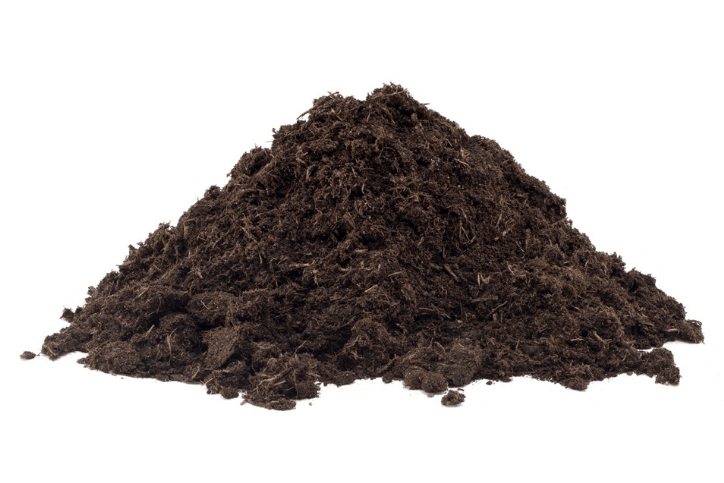How to Dispose of Soil: Eco-Friendly & Cost-Effective Solutions
Hook: “Ever wondered what to do with that excess soil pile staring you down after your landscaping project or gardening escapade? It’s time to master the art of How to Dispose of Soil without breaking the bank or harming the environment.”
So, you’ve wrapped up your landscaping project or put the finishing touches on your garden makeover, only to find yourself faced with a surplus of soil. The question looms: How to Dispose of Soil without resorting to costly landfill solutions? Fear not, for within this dilemma lies an opportunity to explore eco-friendly and cost-effective avenues for soil management. Join us as we delve into innovative strategies to bid farewell to excess soil responsibly, all while keeping your wallet and the environment happy.
How to Dispose of Soil Responsibly? A Guide to the Hierarchy
When it comes to managing excess soil, adopting a hierarchy of disposal is key, with the overarching goal of prioritizing reuse over disposal. Let’s explore this hierarchy and delve into each option, from most preferable to least:
- Reuse on-site: The pinnacle of responsible soil management lies in finding ways to repurpose excess soil right where it sits. Get creative with landscaping ideas such as constructing raised beds, creating berms for erosion control, or even sculpting new features in your outdoor space. By keeping the soil on-site, you not only save on disposal costs but also enrich your landscape with newfound versatility.
- Give it away: One person’s surplus soil is another’s golden opportunity. Consider reaching out to community gardening groups, local restoration projects, or even posting on online forums where individuals might be in need of free soil. By facilitating this exchange, you not only divert soil from landfills but also foster a sense of community and resourcefulness.
- Off-site reuse: If on-site options aren’t feasible, explore opportunities for off-site reuse. Reach out to local contractors who might be on the lookout for fill material for their projects. Additionally, consider donating excess soil to schools or parks for landscaping endeavors. By extending the life cycle of your soil beyond your own property, you contribute to sustainable practices while benefiting others in your community.
By adhering to this disposal hierarchy, you not only tackle the question of How to Dispose of Soil but also embrace a mindset of stewardship, turning what could be considered waste into valuable resources for both yourself and others.

Why Responsible Soil Disposal Matters?
Improper disposal of soil can have far-reaching consequences, extending beyond the confines of our immediate surroundings. When excess soil finds its way into landfills, it contributes to overflow issues, exacerbating the strain on already burdened waste management systems. Moreover, soil contains a myriad of substances, from fertilizers to chemicals, which, when left unchecked, can leach into groundwater, potentially contaminating water sources and disrupting ecosystems.
However, there’s a silver lining amidst this environmental conundrum. By adopting responsible disposal practices, not only do we mitigate these negative impacts, but we also stand to reap substantial benefits. Saving money is undoubtedly a compelling incentive; after all, who doesn’t appreciate cutting costs? But beyond that, there’s a deeper satisfaction in knowing that our actions are contributing to the greater good – safeguarding our planet for generations to come.
In essence, mastering the art of How to Dispose of Soil responsibly isn’t just about managing excess dirt; it’s about making a conscious choice to be stewards of the environment, saving resources, and leaving a positive impact on the world around us.
In the United Kingdom, local councils are instrumental in waste management and environmental protection. They regulate and oversee the operation of waste disposal facilities, ensuring compliance with environmental laws and standards. Additionally, councils provide valuable resources and guidance to residents, helping them navigate the complexities of waste disposal, including soil management.
Responsible Disposal as a Last Resort: Navigating ‘How to Dispose of Soil’ Safely
While the ideal scenario involves finding creative ways to reuse excess soil, there are instances where disposal becomes the only viable option. In such cases, it’s imperative to approach soil disposal with care and consideration for both the environment and regulatory requirements.
- Differentiating Contaminated and Clean Soil: Before disposing of soil, it’s crucial to determine its quality. Clean soil is typically free from contaminants such as chemicals or heavy metals, making it suitable for various reuse applications. On the other hand, contaminated soil poses risks to human health and the environment. To ascertain soil quality, consider testing options available through local environmental agencies or private laboratories. These tests can provide valuable insights into potential contaminants and guide appropriate disposal methods.
- Finding and Utilizing Local Soil Disposal Facilities: When disposal is unavoidable, identifying local soil disposal facilities is essential. Start by contacting your municipal waste management department or environmental agency for information on permitted disposal sites. They can provide valuable guidance on facility locations, contact details, operating hours, pricing structures, and any specific disposal restrictions or requirements. Additionally, online resources and directories may offer insights into nearby facilities and their services.
When utilizing soil disposal facilities, ensure compliance with all regulations and guidelines to prevent environmental harm. This includes adhering to permitted disposal methods, transporting soil safely, and adhering to any facility-specific protocols. By following these steps, you can responsibly navigate the process of soil disposal, mitigating environmental risks and promoting sustainable practices.
Remember, while disposal may be a last resort, approaching it with diligence and awareness ensures minimal impact on the environment and surrounding communities.
Are You Looking For How to Dispose of Mattress?
Conclusion
Mastering the art of soil disposal involves prioritizing reuse, exploring creative solutions, and disposing responsibly when necessary. By following the soil disposal hierarchy, you can minimize waste, save money, and contribute to a healthier environment.
Remember, reuse is the ultimate goal. Whether it’s repurposing soil on-site, giving it away to those in need, or finding off-site reuse opportunities, there are countless ways to extend the life of your soil.
When disposal becomes unavoidable, take the necessary steps to differentiate between clean and contaminated soil, and utilize local soil disposal facilities in compliance with regulations.
Now, we invite you to take action. Share your successful soil disposal experiences in the comments below. Your insights could inspire others facing similar challenges. Additionally, if you found this guide helpful, don’t hesitate to recommend it to friends, family, or community groups tackling the question of How to Dispose of Soil.
Together, let’s continue to innovate, collaborate, and steward our environment responsibly for generations to come.






